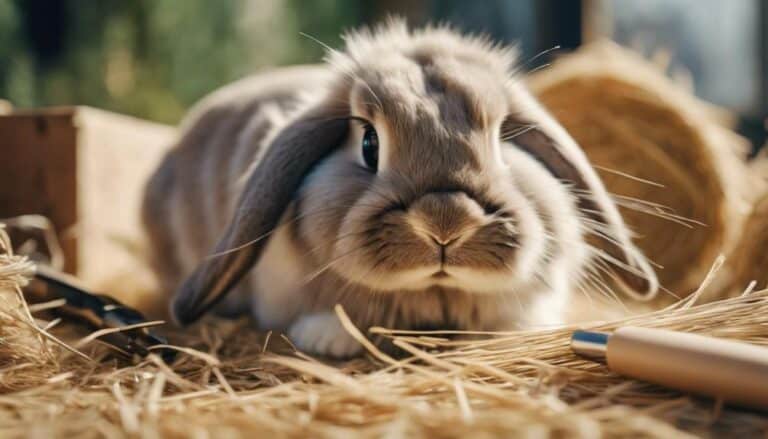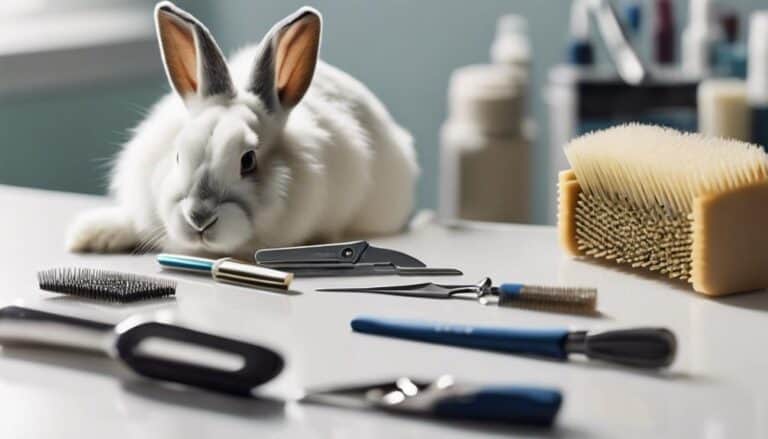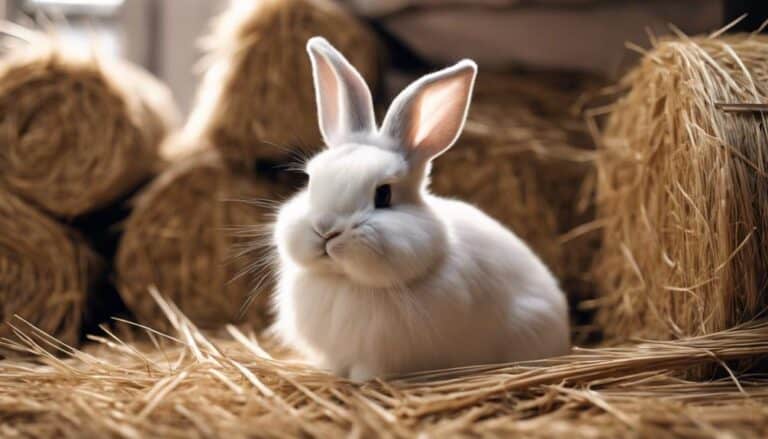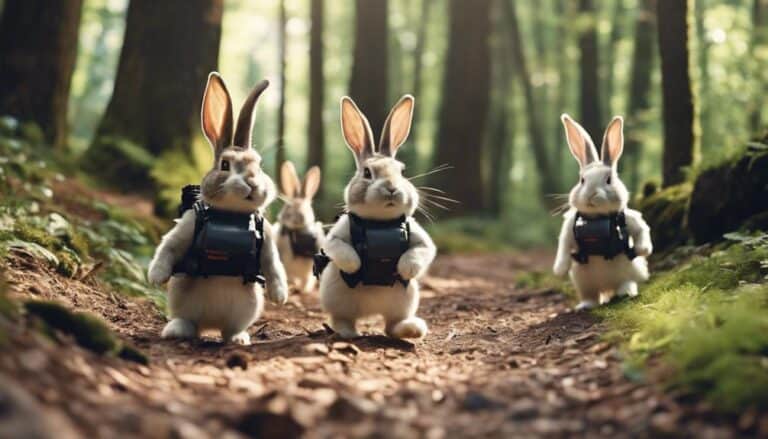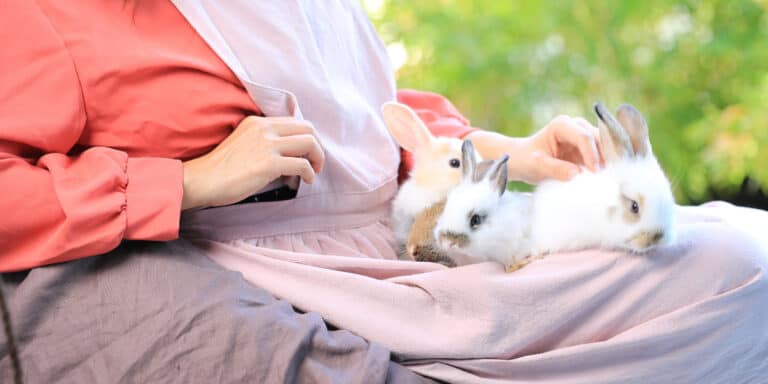When it comes to grooming your bunny, regular brushing not only keeps their fur in top condition but also strengthens your bond with them.
As a beginner, understanding the proper techniques is essential for your rabbit's well-being. Starting with the right tools and techniques can make all the difference in maintaining your bunny's coat.
So, are you ready to discover the key steps to master the art of bunny fur brushing?
Contents
- 1 Key Takeaways
- 2 Importance of Proper Bunny Fur Brushing
- 3 Ideal Brush Types for Bunny Grooming
- 4 Step-by-Step Guide to Bunny Fur Brushing
- 5 Handling Bunny's Dislike for Brushing
- 6 Tackling Matted Fur in Bunnies
- 7 Special Care for Long-Haired Bunnies
- 8 Maintaining Regular Bunny Grooming Routine
- 9 Frequently Asked Questions
- 10 Can Beginners Learn Proper Bunny Fur Brushing Techniques from your guide?
- 11 Conclusion
Key Takeaways
- Regular grooming maintains health, prevents matting, and promotes overall well-being.
- Use appropriate tools like slicker brushes and combs for effective grooming.
- Brush gently in the direction of fur growth to prevent discomfort.
- Ensure a tangle-free and comfortable grooming experience for your bunny.
Importance of Proper Bunny Fur Brushing
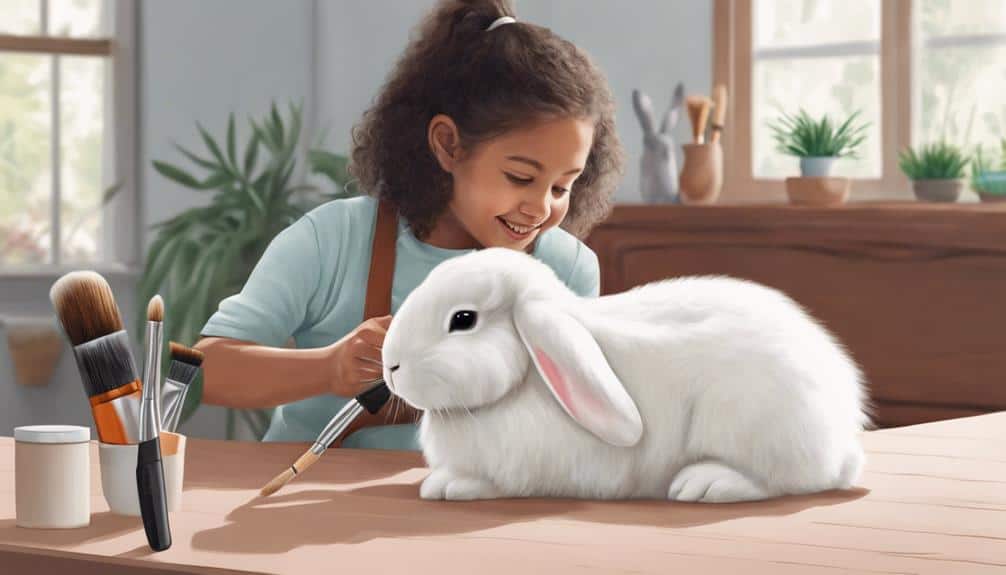
Regularly brushing your bunny's fur is essential for maintaining their health and comfort. Rabbits groom themselves, but they need your help to prevent hairball buildup and excessive fur ingestion, which can lead to digestive issues. Brushing is especially important during shedding seasons to help rabbits stay clean and comfortable.
It's crucial for long-haired rabbits like Angoras and Lionheads to prevent their fur from becoming dirty or matted. By using the right grooming tools and techniques, you can also avoid skin irritation and discomfort in your furry friend. Establishing a consistent brushing routine not only keeps your bunny looking neat but also contributes significantly to their overall well-being.
Ideal Brush Types for Bunny Grooming
When grooming your bunny, selecting the ideal brush types is important for maintaining their fur health and appearance. Here are some brush types that will cater to your bunny's grooming needs:
- Slicker brushes: Perfect for removing loose fur and preventing matting, keeping your bunny's coat in top condition.
- Fine-toothed combs: Effective at detangling knots and making sure your bunny's fur stays smooth and knot-free.
- Rubber brushes: Gentle on your bunny's skin and great for surface brushing during grooming sessions.
- Flea combs: Useful for removing parasites and debris from your bunny's fur, keeping them clean and healthy.
Remember to take your bunny's coat type and grooming requirements into account when choosing a brush. Opt for a brush that strikes a balance between being comfortable for your bunny and effective in maintaining their coat. By using the right tools, you can make sure your bunny's grooming routine isn't only beneficial but also a pleasant experience for your furry friend.
Step-by-Step Guide to Bunny Fur Brushing
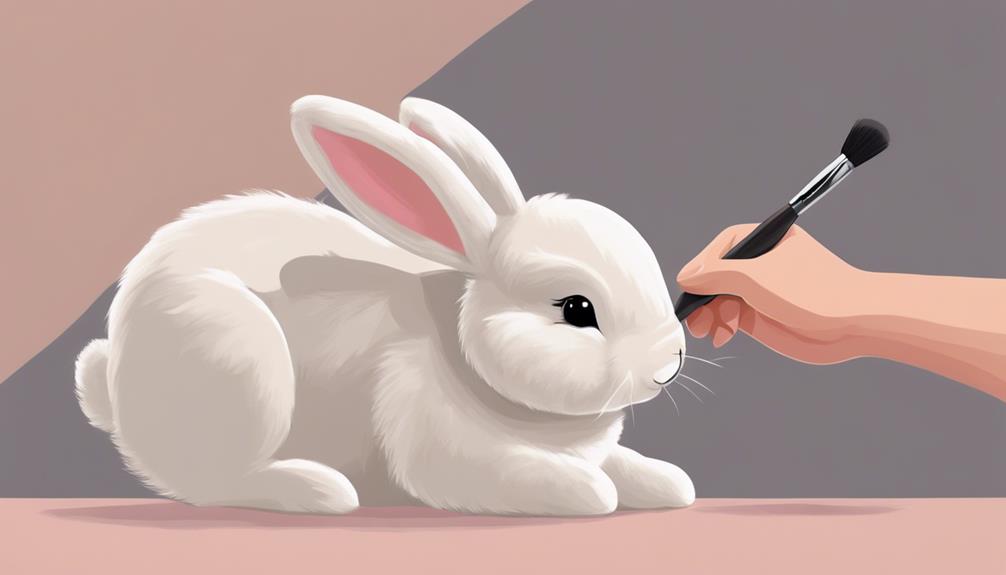
To successfully brush your bunny's fur, make sure you have the right tools such as a soft-bristled brush.
Start by gently petting your rabbit to create a calm environment before beginning the brushing process.
This step-by-step guide will cover the tools needed, proper fur brushing techniques, and essential maintenance tips to keep your bunny's fur healthy and shiny.
Brushing Tools Needed
For effective bunny fur brushing, make sure you have the essential tools at hand, including slicker brushes, fur splitters, fine-toothed combs, and rubber brushes.
- Slicker brushes: Ideal for removing loose fur and preventing matting.
- Fur splitters: Help detangle mats gently without discomfort.
- Fine-toothed combs: Reach the undercoat and remove remaining loose fur effectively.
- Rubber brushes: Gentle on your bunny's skin while efficiently removing excess fur.
Having these tools ready will guarantee a smooth and comfortable brushing experience for your bunny, keeping their coat healthy and free from tangles. Remember, using the right tools is key to maintaining your bunny's fur in top condition.
Fur Brushing Technique
After gathering the necessary brushing tools for your bunny's fur care, the next step is mastering the correct technique to guarantee a smooth grooming experience.
Start by gently petting your rabbit to relax them before brushing. Use a soft bristle brush or comb and brush in the direction of the fur growth. Work in small sections, focusing on one area at a time to prevent discomfort.
Remove loose fur by gently plucking it out as you brush. Finish by brushing down the rabbit's back with gentle strokes to remove any excess fur.
Maintenance Tips
Begin by gently petting your rabbit to relax them before starting the fur brushing process. When maintaining your rabbit's fur, follow these essential tips:
- Use a soft bristle brush to gently groom your rabbit's coat.
- Check for and carefully remove any mats, especially behind the ears and under the chin.
- Pluck out loose fur during brushing to prevent hairballs and matting.
- Finish by using a rubber brush to eliminate any remaining loose fur, leaving your rabbit with a sleek, clean coat.
Handling Bunny's Dislike for Brushing
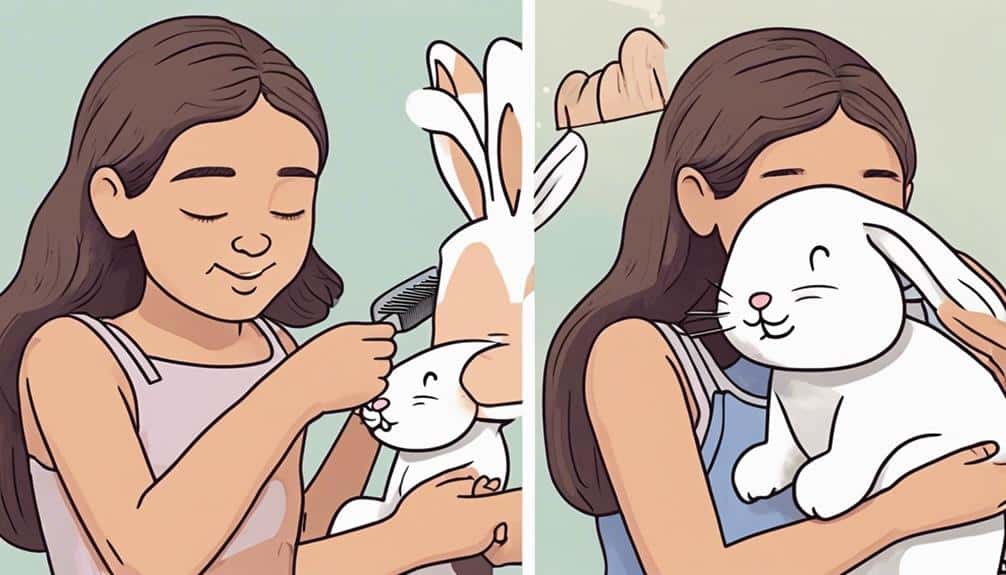
If your bunny displays resistance towards brushing, employing positive reinforcement techniques and experimenting with various grooming tools can help alleviate their discomfort. Use treats and praise to create a positive association with grooming sessions, making it a more enjoyable experience for your bunny.
Experiment with tools like flea combs or rubber brushes to find what works best for your furry friend. Start brushing sessions slowly and gently, allowing your bunny to get used to the sensation at their own pace.
Integrate short grooming sessions into your bunny's daily routine to normalize the process and make it a familiar part of their day. If your bunny continues to resist brushing despite these efforts, seek guidance from a rabbit-savvy vet or a professional groomer who can provide specialized advice tailored to your bunny's needs.
Tackling Matted Fur in Bunnies
Having addressed your bunny's resistance to brushing, the next step involves tackling matted fur in bunnies effectively using specialized tools and techniques. When dealing with matted fur, it's important to approach the situation with care and precision.
Here are some key points to keep in mind:
- Utilize a fur splitter or mat rake: These tools can help gently detangle the matted fur without causing discomfort to your bunny.
- Seek professional help if needed: If the matted fur is severe or challenging to remove, it's best to consult a professional to prevent any skin issues or discomfort for your pet.
- Avoid cutting mats with scissors: To prevent accidental injuries to your rabbit's sensitive skin, refrain from using scissors to cut through the mats.
- Regular grooming and hygiene practices: Consistent grooming routines and proper hygiene practices can help prevent matted fur from becoming a significant problem for your bunny.
Special Care for Long-Haired Bunnies
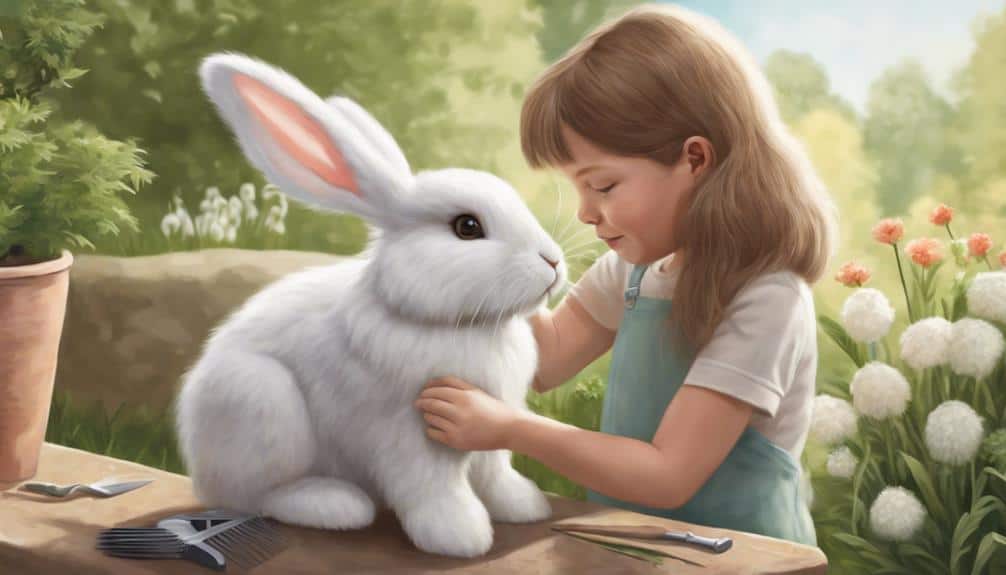
For your long-haired bunny, daily grooming is essential to prevent matting and maintain a healthy coat. Consider using specialized tools like mat splitters or rakes to detangle mats without causing discomfort.
Trimming the belly fur regularly can also help reduce grooming time and prevent matting issues.
Long Hair Grooming Tips
Long-haired bunnies, such as Angora and Lionhead breeds, demand meticulous daily grooming to prevent matting and guarantee their comfort. When grooming your long-haired rabbit, follow these tips:
- Trim the fur to a manageable length to reduce grooming efforts.
- Brush in layers to reach the undercoat effectively.
- Keep the fur under the belly trimmed for hygiene.
- Regular grooming, especially during shedding seasons, is important to prevent mats and maintain overall health.
Tangle Prevention Techniques
To maintain the health and comfort of your long-haired bunny, employing proper tangle prevention techniques is important. Long-haired rabbits are prone to fur tangling due to their dense coats. Regular brushing with a slicker brush is essential to prevent mats and tangles in their fur.
Focus on grooming the undercoat and belly fur, as these areas are prone to mat formation in long-haired bunnies. Trimming the fur to a manageable length can greatly reduce tangles and grooming efforts for your rabbit. Daily grooming is a must for long-haired rabbits to maintain a healthy coat and prevent matting issues.
Maintaining Regular Bunny Grooming Routine
Establishing a consistent grooming schedule is essential for maintaining your bunny's overall health and well-being. When it comes to rabbit grooming, a regular grooming routine is key to keeping your bunny's fur in top condition and preventing any potential health issues. Here are some tips to help you maintain a successful grooming routine:
- Use positive reinforcement and treats during grooming sessions to create a positive experience for your rabbit.
- Keep grooming sessions short and gentle to avoid causing stress to your bunny.
- Regularly check for any signs of parasites or skin issues while grooming your bunny to catch any problems early on.
- Don't hesitate to seek professional help if you encounter any grooming challenges or health concerns with your bunny. Professional groomers and veterinarians can provide valuable assistance and guidance.
Frequently Asked Questions
How Do You Brush a Rabbit's Fur?
When brushing a rabbit's fur, start by gently brushing in the direction of hair growth to prevent discomfort and tangles. Use soft bristle brushes or fine-toothed combs to remove loose fur and maintain coat health. Bond with your rabbit through grooming sessions.
How Often Should I Brush My Bunny?
You should brush your bunny according to the shedding season, aiming for daily during short shedding periods and 2-3 times a week for longer ones. Use suitable tools, gentle handling, and regular grooming for health benefits, bonding time, and coat maintenance.
Can You Over Brush a Rabbit?
You can definitely over brush a rabbit, causing stress, dryness, and discomfort. Adjust brushing frequency based on shedding season and fur type. Observe your bunny's reaction to prevent over grooming, promoting their health and well-being.
What Happens if You Don't Brush Your Rabbit?
If you don't brush your rabbit, shedding consequences can lead to matted fur, health risks, skin irritations, and behavioral changes. Neglected grooming can create a tangled mess, making your bunny unhappy and potentially requiring veterinary visits.
Can Beginners Learn Proper Bunny Fur Brushing Techniques from your guide?
Yes, beginners can absolutely learn proper bunny fur brushing techniques from our guide. Our step-by-step instructions and helpful tips will ensure that even those new to bunny grooming can learn how to properly care for their furry friends.
Conclusion
To sum up, proper bunny fur brushing techniques are essential for maintaining your rabbit's health and well-being.
Just like a skilled artist gently strokes their canvas, you must delicately brush your bunny's fur to keep it soft and mat-free.
Remember to use the right tools, establish a regular grooming routine, and be patient with your furry friend.
With practice and care, you'll become a pro at keeping your bunny looking and feeling their best.

